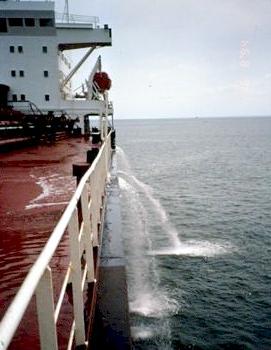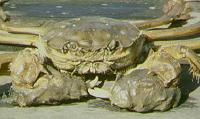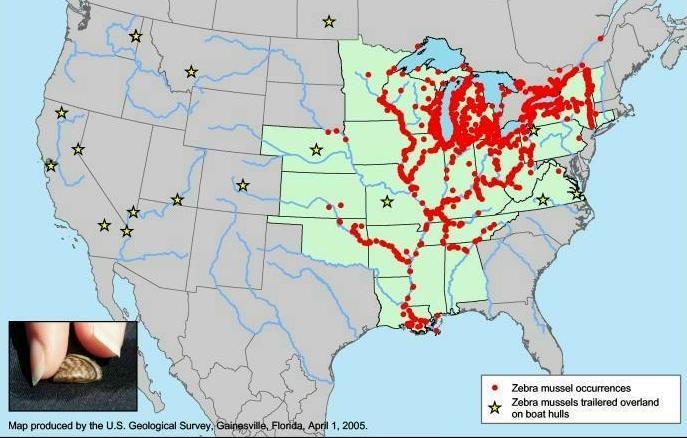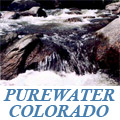|
Court Acts to Halt Dumping Invasive
Species in U.S. Waters
SAN FRANCISCO, California, April 4, 2005 (ENS) - Ship ballast water can no longer be
dumped in U.S. ports without a permit, a federal judge in
California has ruled. Invasive species - such as zebra mussels
and Chinese mitten crabs - hitchhike in the ballast water of
ships entering U.S. ports from around the world. The exotic
aquatic plants and animals enter U.S. waters when the ships
discharge water taken on as ballast to adjust their weight
when cargo is loaded.
In a lawsuit brought by environmental groups concerned
about the release of invasive species into U.S. wasters, Judge
Susan Illston ruled Thursday that the U.S. Environmental
Protection Agency (EPA) must repeal a regulation exempting
ships that discharge ballast water from the permit
requirements of the Clean Water Act.
Judge Illston found that the EPA "acted in excess of its
statutory authority" by exempting ballast water discharges
from the National Pollutant Discharge Elimination Systems
(NPDES) permit program. "EPA did not have authority to exclude
categories of point sources from NPDES permit program," the
judge wrote.

Ship discharges ballast water that may have invasive
aquatic species from across the globe. (Photo courtesy
NBIC) Plaintiff groups -
Northwest Environmental Advocates, the Ocean Conservancy, and
Waterkeepers Northern California and its projects Center for
Marine Conservation and San Francisco Baykeeper and
Deltakeeper - were pleased with the ruling in their
longstanding case against the federal agency.
"Over 30 years ago EPA made a grave error in failing to
regulate the indiscriminate dumping of invasive species along
the nation's coasts and the Great Lakes, an error it
compounded when it refused to grant our petition over six
years ago," said Nina Bell, executive director of Northwest
Environmental Advocates based in Portland, Oregon.
Environmental groups first petitioned EPA to regulate
ships' ballast water discharges in 1999 because ballast water
is the nation's largest source of aquatic invasive species.
After having been forced through an initial lawsuit to answer
the groups' petition, the EPA denied it in September 2003,
"Today we're extremely gratified by the court's ruling,
which brings the requirements of the Clean Water Act to bear
on preventing new invasions. It's a shame that EPA requires a
court order to comply with federal law," Bell said.
The Earthjustice Environmental Law Clinic at Stanford
University and Pacific Environmental Advocacy Center at Lewis
and Clark Law School in Portland, Oregon, represent the three
organizations.
"This is a decisive legal victory," said Deborah Sivas,
director of the Earthjustice Environmental Law Clinic at
Stanford said. "It will provide protection against invasive
species in hundreds of bays, rivers and streams throughout the
country and in our coastal waterways."
A tanker ship in the Great Lakes can contain as much as 14
million gallons of ballast water, which would be discharged at
port when the ship takes on cargo. Seagoing tankers can have
double the amount of ballast water. The amount of ballast
water discharged in this country’s waters exceeds 21 billion
gallons each year.
The EPA did not respond to calls for comment. The agency
states on its website that the introduction of invasive
species through ship ballast water is "a major concern."
"All mainland coasts of the United States – East, West,
Gulf, and Great Lakes, as well as the coastal waters of
Alaska, Hawaii, and the Pacific Islands – have felt the
effects of successful aquatic species invasions," the agency
website states.

The Chinese mitten crab may have been illegally introduced
to San Francisco Bay in 1992-94 as a food resource. It burrows
into and weakens dikes and levees and is a host to the
oriental lung fluke, a human parasite. (Photo courtesy
USGS) "Over two-thirds of recent non-native
species introductions in marine and coastal areas are likely
due to ship-borne vectors, and ballast water transport and
discharge is the most universal and ubiquitous of these. EPA
is working in conjunction with our Federal and State partners
to address this source of aquatic invasive species both
domestically and internationally," the agency states.
Sarah Newkirk, clean oceans advocate for The Ocean
Conservancy said, "Invasive species carried in ships' ballast
water have measurable impacts to businesses, taxpayers and the
environment. They harm commercial fishing and shellfishing,
clog the intake pipes of power plants and drinking water
treatment facilities, destroy habitats and push threatened
species to the edge of extinction."
"It's high time EPA placed the burden of controlling
invasive species on those who create the problem," Newkirk
said.
In her ruling Judge Illston cited a study by the
investigative arm of Congress, the Government Accountability
Office (GAO), which said “more than 10,000 marine species each
day hitch rides around the globe in the ballast water of cargo
ships.”
"Invasive species transported by ballast water have taken
over wetland habitats, and deprived waterfowl and other
species of food sources," the GAO report says.
There are many invasive aquatic species in the San
Francisco Bay and San Joaquin Delta, the largest estuary
system on the U.S. west coast and one of the world's busiest
international ports.
"The Bay-Delta estuary is a poster child for the harm
caused by invasive species carried in ballast water. It is the
most invaded estuary in North America and possibly the world,"
said Leo O'Brien, executive director of Baykeeper.
"The invaders like the Asian clam, the green crab, and the
Chinese mitten crab now dominate the native species and it's
getting worse: on average a new species establishes itself in
the Bay every 14 weeks," said O'Brien. "Hopefully the tide is
now turning."

Map shows distribution of zebra mussels - the red dots are
sightings, the yellow stars are locations the mussels were
trailered to overland on boat hulls. U.S. Geological Survey
map published April 1, 2005. (Map courtesy USGS)
Zebra mussels have become a widespread aquatic
invasive species throughout the eastern United States since
they arrived in the Great Lakes from the Caspian Sea in ships’
ballast water around 1988. The tiny, fast growing striped
mussels have clogged the water pipes of electric companies and
other industries.
The costs of zebra mussel proliferation are now more than
$3 billion per decade, according to 2002 estimates by the
General Accountability Office. | 


